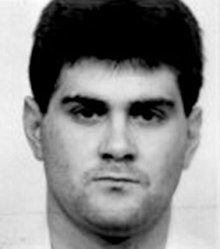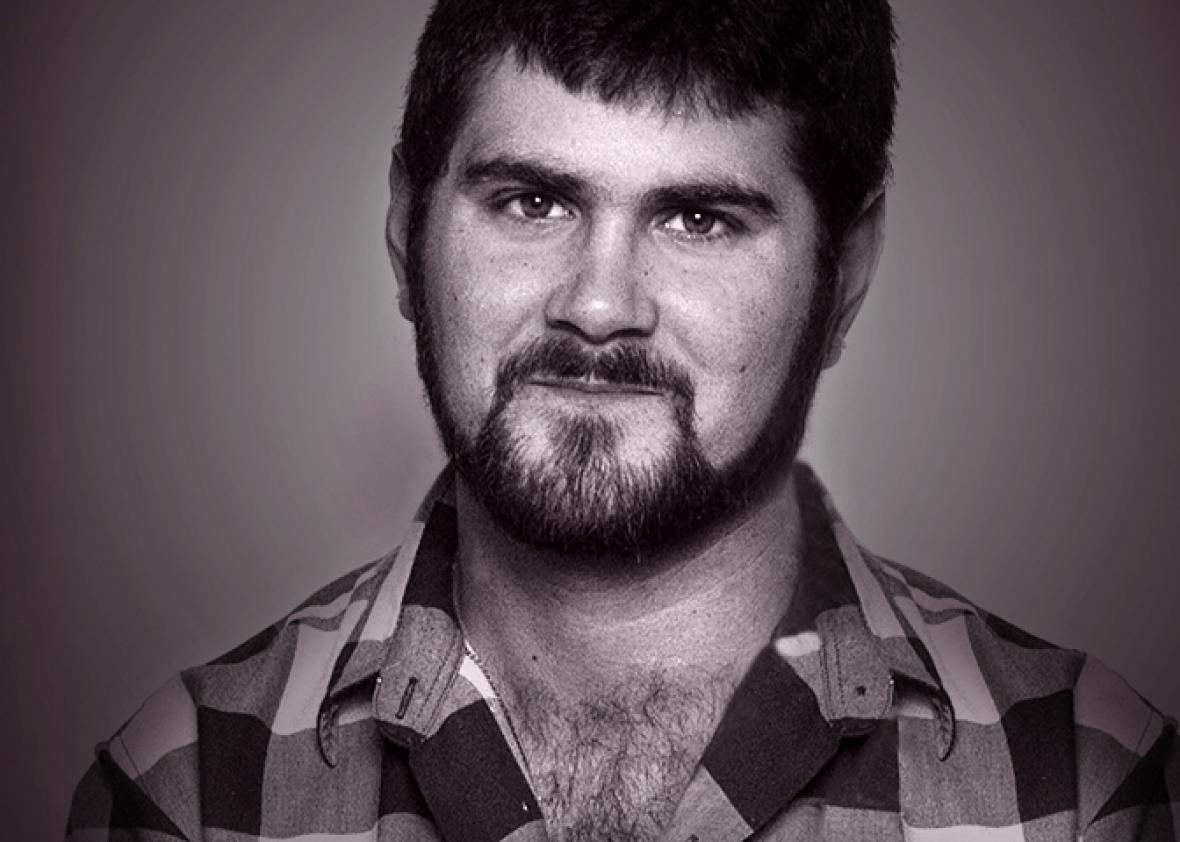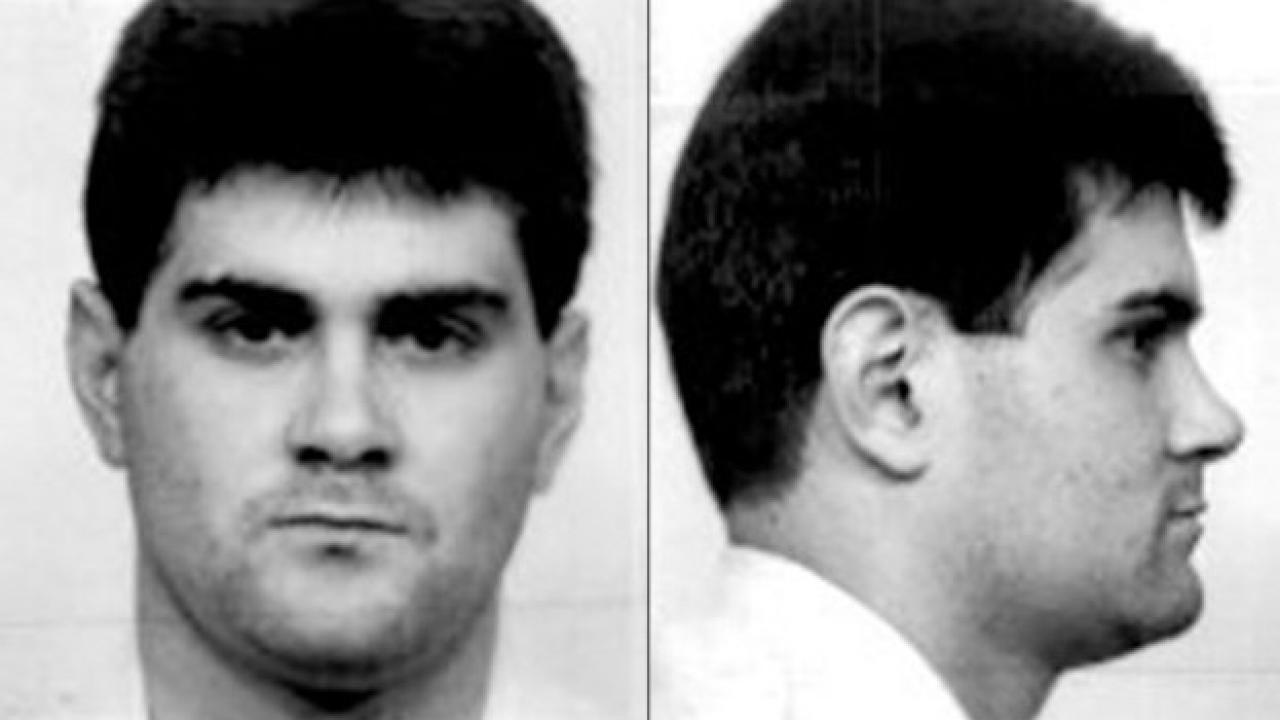Cameron Todd Willingham: A Legacy Of Doubt And Flawed Justice
The case of Cameron Todd Willingham stands as a chilling testament to the potential for grave error within the justice system, particularly when intertwined with evolving scientific understanding. Executed in Texas in 2004, Willingham was convicted of setting a fire that tragically claimed the lives of his three young daughters. However, his story is far from simple, marked by persistent claims of innocence and a mounting body of evidence that has cast a long, dark shadow over the validity of his conviction. This article delves into the complexities of the Willingham case, examining the fire, the trial, the controversial science, and the enduring questions that continue to challenge our understanding of justice, truth, and the irreversible nature of capital punishment.
The narrative surrounding Cameron Todd Willingham has become a touchstone in discussions about wrongful convictions and the death penalty in the United States. From the initial tragedy to the subsequent legal battles and the ultimate execution, his case has garnered international attention, fueled by the dedicated efforts of organizations like the Innocence Project and the revelations of flawed forensic science. It is a story that compels us to look closely at the mechanisms of justice and ask whether they truly serve their ultimate purpose.
Table of Contents
- The Biography of Cameron Todd Willingham
- The Tragic Fire of 1991 and Its Aftermath
- The 1992 Capital Trial: A Deep Dive into the Prosecution's Case
- Flawed Arson Science: The Heart of the Controversy
- Cameron Todd Willingham's Insistence on Innocence
- The Innocence Project and Mounting Evidence of Wrongful Conviction
- The Execution of Cameron Todd Willingham: A State's Decision
- The Lingering Aftermath: Ethics, Relatives, and a Film
- Conclusion
The Biography of Cameron Todd Willingham
Cameron Todd Willingham's life, prior to the tragic events that would define his public narrative, was largely unremarkable, marked by the struggles and complexities common to many individuals. Born on January 9, 1968, in Ardmore, Oklahoma, Willingham eventually settled in Corsicana, Texas, with his young family. Accounts suggest he had a history of minor brushes with the law, which would later be scrutinized by police during their investigation into the fire. These past incidents, though unrelated to arson or violence, were noted by authorities when they questioned him, potentially influencing initial perceptions and the direction of the investigation. He was a young father, married to Stacy Kuykendall, and together they had three daughters: Amber, Karmon, and Kameron.
Personal Data and Background
To understand the timeline and key facts surrounding Cameron Todd Willingham, here is a summary of his personal data:
| Attribute | Detail |
|---|---|
| Full Name | Cameron Todd Willingham |
| Born | January 9, 1968 |
| Died | February 17, 2004 (Executed) |
| Alleged Crime | Arson-murder of his three young daughters |
| Victims | Amber Willingham (2), Karmon Willingham (1), Kameron Willingham (1) |
| Date of Fire | December 23, 1991 |
| Conviction Date | August 1992 |
| Execution Date | February 17, 2004 |
| Location | Corsicana, Navarro County, Texas |
| Key Controversies | Flawed arson science, prosecutorial misconduct allegations, claims of innocence |
The Tragic Fire of 1991 and Its Aftermath
The devastating event that irrevocably altered Cameron Todd Willingham's life, and ultimately led to his execution, occurred on December 23, 1991. A fire engulfed his home in Corsicana, Texas, claiming the lives of his three young daughters: two-year-old Amber and one-year-old twins Karmon and Kameron. Willingham managed to escape the burning house, suffering burns in the process. He immediately alerted neighbors and attempted to re-enter the house to save his children, but was reportedly held back by the intense flames and smoke.
In the immediate aftermath, the scene was one of unimaginable grief and chaos. Police and fire investigators arrived, and it wasn't long before suspicion began to fall on Willingham. Their initial observations, coupled with his emotional state – which some interpreted as being too calm or lacking appropriate grief – raised red flags. Police noted his previous brushes with the law, a detail that, while seemingly minor, may have contributed to a pre-existing bias. Cameron was soon arrested for murder and put in jail, accused of intentionally setting the fire that killed his children. This swift arrest, made within days of the tragedy, marked the beginning of a legal battle that would span more than a decade and ignite a national debate.
The 1992 Capital Trial: A Deep Dive into the Prosecution's Case
The trial of Cameron Todd Willingham commenced in August 1992, just months after the devastating fire. The state of Texas sought the death penalty, asserting that Willingham had deliberately set the blaze to murder his daughters. The prosecution's case hinged almost entirely on the testimony of fire investigators, who claimed to have found definitive evidence of arson, and a jailhouse informant who alleged Willingham confessed to him. This was a capital trial, meaning the stakes could not have been higher for Willingham.
The lead prosecutor in Navarro County, Texas, was John Jackson, who would later face his own legal challenges regarding his conduct in this very case. Jackson's strategy relied heavily on the then-accepted, albeit now largely debunked, methods of arson investigation. Fire marshals testified to "pour patterns" on the floor, indicating the use of an accelerant, and "crazed glass," suggesting rapid heat buildup from a liquid fuel. They also pointed to the rapid flashover and intense heat of the fire as evidence of arson. Furthermore, the prosecution presented testimony from Johnny Webb, a jailhouse informant who claimed Willingham confessed to him in exchange for help with his own case. Webb's credibility, however, would later come under severe scrutiny, as he reportedly had a history of providing false testimony in exchange for leniency.
Despite the defense's attempts to counter these claims, presenting witnesses who testified to Willingham's efforts to save his children and experts who questioned the arson findings, the jury ultimately sided with the prosecution. Cameron Todd Willingham was convicted of capital murder, setting the stage for his eventual placement on death row.
Flawed Arson Science: The Heart of the Controversy
At the core of the enduring controversy surrounding Cameron Todd Willingham's conviction is the issue of flawed arson science. For decades, fire investigators relied on a set of indicators believed to signify arson, such as "crazed glass" (cracked glass patterns), "spalling" (chipping of concrete), "pour patterns" (irregular burn patterns on floors), and "flashover" (the rapid spread of fire). These indicators, once considered definitive proof of an accelerant-fueled fire, were widely accepted in forensic circles and presented as irrefutable evidence in courtrooms across the country.
However, beginning in the late 1980s and accelerating into the 1990s, the scientific understanding of fire dynamics underwent a significant revolution. Researchers and fire scientists began to critically re-evaluate these traditional indicators. What they discovered was startling: many of the supposed signs of arson could, in fact, be caused by innocent, accidental fires. For instance, "crazed glass" was found to be a result of rapid cooling, not necessarily rapid heating from an accelerant. "Pour patterns" could be created by collapsing furniture or the natural spread of fire, and "spalling" could occur due to moisture in concrete, not just intense heat from an accelerant. The very notion of a "low burn" indicating an accelerant was debunked, as fire naturally burns downward.
In Willingham's case, fire investigators testified to finding multiple such "indicators" of arson. They claimed to have identified pour patterns on the floor, suggesting accelerants were used, and that the fire's intensity and speed were indicative of an intentionally set blaze. Years later, expert fire scientists, including Dr. Gerald Hurst and Dr. John Lentini, independently reviewed the evidence from the Willingham fire. They concluded, unequivocally, that the original investigation was based on outdated and scientifically invalid methodologies. Their reports stated that there was no scientific basis to conclude that the fire was arson, suggesting it was far more likely to have been accidental. This widespread faulting of the case for its use of flawed arson science became a central pillar of the argument for Cameron Todd Willingham's innocence.
Cameron Todd Willingham's Insistence on Innocence
From the moment of his arrest to his final breath, Cameron Todd Willingham maintained an unwavering insistence on his innocence. Despite the overwhelming pressure of a capital murder charge and the grim reality of death row, he consistently denied any involvement in setting the fire that killed his children. This steadfast denial stood in stark contrast to the prosecution's narrative and the verdict of the jury.
During his incarceration, he repeatedly expressed his grief for his lost daughters and his bewilderment at the accusation. He insisted upon his innocence in the deaths of his children and refused an offer to plead guilty in return for a life sentence, a decision that many found remarkable given the alternative. For someone facing execution, accepting a life sentence, even if innocent, might seem a pragmatic choice to avoid death. Willingham, however, steadfastly refused, believing that to admit guilt would be a betrayal of his children and an admission of a crime he did not commit. This refusal, often cited by his supporters, underscored his profound commitment to clearing his name. He insisted on his innocence until the very end, a powerful and poignant detail that continues to resonate with those who believe he was wrongly convicted.
Photographs from his time in his cell on death row, such as one taken in 1994, depict a man enduring the crushing weight of his predicament, yet seemingly resolute in his stance. His refusal to confess, even when it might have saved his life, became a key piece of the puzzle for those who later championed his cause.
The Innocence Project and Mounting Evidence of Wrongful Conviction
The case of Cameron Todd Willingham gained significant national attention through the involvement of the Innocence Project, a non-profit legal organization dedicated to exonerating wrongly convicted individuals through DNA testing and advocating for reforms to the criminal justice system. While DNA was not a factor in Willingham's arson case, the Innocence Project became deeply involved due to the profound questions surrounding the forensic evidence used against him.
As the scientific understanding of arson evolved, the Innocence Project began to work with leading fire scientists to review the original evidence from the 1991 fire. Their analysis, conducted by experts like Dr. Gerald Hurst, concluded that every piece of physical evidence presented at trial as proof of arson was, in fact, consistent with an accidental fire. This included the supposed "pour patterns" and "crazed glass" that had been central to the prosecution's case. Dr. Hurst's report, submitted to the Texas Board of Pardons and Paroles, stated unequivocally that there was no scientific basis to conclude the fire was intentionally set.
Beyond the scientific re-evaluation, the Innocence Project also uncovered serious questions about the credibility of the jailhouse informant, Johnny Webb, whose testimony had been crucial in securing Willingham's conviction. Webb later recanted parts of his testimony, claiming he had been pressured by prosecutor John Jackson to lie in exchange for a reduced sentence in his own case. This recantation, combined with the scientific repudiation of the arson evidence, amounted to significant and mounting evidence of Cameron Todd Willingham's innocence. Despite these compelling new findings, and the urgent pleas from the Innocence Project and others, the state of Texas proceeded with the execution.
The Execution of Cameron Todd Willingham: A State's Decision
Despite the mounting evidence casting serious doubt on his guilt, and the passionate appeals from legal advocates and fire science experts, Cameron Todd Willingham was executed in Texas on February 17, 2004. The state of Texas carried out the sentence for triple homicide, specifically regarding the 1991 fire that killed his three daughters, a decision that remains one of the most controversial in the history of capital punishment in the United States.
In the days leading up to the execution, the Innocence Project and Willingham's legal team made desperate last-minute appeals to then-Governor Rick Perry and the Texas Board of Pardons and Paroles. They presented the detailed reports from fire science experts, which definitively debunked the forensic evidence used to convict him. They also highlighted the recantation of the jailhouse informant. However, these pleas were denied. Governor Perry stated that he saw no reason to doubt the verdict, and the Board declined to recommend clemency or a stay of execution.
The execution of Cameron Todd Willingham, an Innocence Project client, despite mounting evidence of his innocence, sent shockwaves through the legal and scientific communities. It served as a stark and tragic example of the irreversible nature of the death penalty and the potential for a justice system to fail even when new, compelling evidence emerges. There’s been yet another blow to the case against Cameron Todd Willingham, not in the sense of new evidence *against* him, but rather the continued erosion of confidence in the original conviction, reinforced by the ethical and scientific failings that have come to light since his death.
The Lingering Aftermath: Ethics, Relatives, and a Film
Eight years after Cameron Todd Willingham was executed for setting a fire that killed his three children, in a case now widely faulted for its use of flawed arson science, the controversy has only deepened. His relatives are still seeking to clear his name, and the legal and ethical implications continue to reverberate through the Texas justice system and beyond. The case has become a symbol for the urgent need for forensic science reform and accountability for prosecutorial misconduct.
John Jackson and Ethics Violations
One of the most significant developments in the aftermath of Willingham's execution has been the scrutiny placed on John Jackson, the former Navarro County, Texas prosecutor and judge who handled Willingham's 1992 capital trial. Jackson has faced formal complaints and was put on trial for ethics violations related to his conduct in the Willingham case. These allegations included claims that he withheld exculpatory evidence and knowingly allowed perjured testimony (from Johnny Webb, the jailhouse informant) to be presented at trial. Many observers and legal experts have pointed to Jackson's actions as a key component of the injustice in the Willingham case. While Jackson has consistently insisted on the validity of the conviction, the ethics trial and the broader public discourse have significantly undermined trust in the original proceedings.
Relatives Seeking Justice
Even after his death, Cameron Todd Willingham's family, particularly his mother and cousins, have continued their tireless efforts to clear his name. They have worked closely with the Innocence Project and other advocacy groups, hoping to achieve a posthumous exoneration. For them, the fight is not just about their lost loved one, but about ensuring that no other family has to endure such a profound miscarriage of justice. Their persistent pursuit of truth and vindication underscores the deep personal toll that wrongful convictions inflict, even years after the fact.
‘Trial by Fire’: Bringing the Story to the Screen
The compelling and tragic story of Cameron Todd Willingham gained even wider public awareness with the release of the 2019 film ‘Trial by Fire,’ starring Jack O'Connell as Willingham and Laura Dern as Elizabeth Gilbert, an activist who championed his cause. The film is based on the real trial of Cameron Todd Willingham, a Texas man who was convicted of murder by arson and executed. It dramatizes the events leading up to the fire, the subsequent investigation where Willingham is questioned by police who note his previous brushes with the law, his arrest, and his time on death row. The film vividly portrays his insistence on innocence, his refusal to plead guilty, and the desperate efforts of his advocates to save him. ‘Trial by Fire’ brought the complex issues of flawed forensic science, prosecutorial conduct, and the death penalty to a mainstream audience, reigniting discussions and debates about the case and the broader implications for the American justice system.
Conclusion
The case of Cameron Todd Willingham remains a deeply troubling and poignant chapter in the history of American criminal justice. His execution in 2004, despite overwhelming and scientifically sound evidence suggesting his innocence, serves as a stark reminder of the fallibility of human institutions and the irreversible consequences of capital punishment. From the initial reliance on flawed arson science to the allegations of prosecutorial misconduct and the unwavering claims of innocence by Cameron Todd Willingham himself, every facet of this case demands critical examination.
The ongoing efforts by his relatives to clear his name, the ethics trial of the former prosecutor, and the widespread attention brought by the film ‘Trial by Fire’ ensure that Willingham's story continues to resonate. It is a powerful call to action for systemic reform: to ensure that forensic science in courtrooms is always based on the most current and reliable scientific understanding, that prosecutorial conduct adheres to the highest ethical standards, and that the justice system prioritizes truth and fairness above all else. The legacy of Cameron Todd Willingham compels us to reflect on the very foundations of our legal processes and to strive for a system where such a profound miscarriage of justice can never happen again.
- Hakone Estate
- Cork And Batter
- Jonathan Bloomer Morgan Stanley
- Best Western Premier The Tides
- Kashkar Cafe

Cameron Todd Willingham - Wikipedia, the free encyclopedia

Report Documents the Execution of an Innocent Man in Texas | Equal

5 Things To Know About The Cameron Todd Willingham Case | Investigation